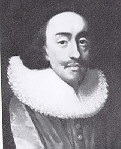|
The English Civil War Perhaps there has never been a time in history where there hasn't been some conflict between the concept of a monarchy versus the concept of a republic. England has certainly been no exception to that rule. In England, the most explosive example of this conflict took place in the 17th century - and a war that tore the country in half: The English Civil War. So it is here that we find the most literal examples of the name Cavalier. Put simply, Cavaliers were the supporters of Charles I and the monarch (supporters were also known as Loyalists). Opposing the Cavaliers were the Parliamentarians, or 'roundheads' Charles I From the time Charles I became king in 1625, numerous power struggles ensued. For 11 years, Charles I had ruled alone (after dissolving Parliament). He hardly created many friends when he married a Catholic Princess and increased taxes on his people to support unwanted wars. When he later recalled Parliament in 1640, he requested money to put down a rebellion in Scotland. When he didn't get the response he wanted, he had five of his opponents arrested. This triggered the first civil war. Sympathizers with the monarchy were called Royalists, or Cavaliers (imagine that). Those against the Royalists were the Puritans, or "Roundheads." The first civil war started in 1642 and ended in 1646. Despite Charles I's initial advantage, in the end, Parliament had the money to maintain a professional army and therefore prevailed. Charles I was imprisoned in 1645 from where he would plan a second attack with the help of the Scottish. This second civil war led to a decisive defeat for the Royalists and Charles I was executed in 1649 for treason. Charles I accepted his penalty with dignity and this would later help to restore his son to the throne. For a short time Oliver Cromwell, a Puritan, emerged to try to manage the disorganized and ineffective Parliament. Cromwell had recruited and trained in the Parliament's New Model Army. During this time he ruled as what was to be called the "Lord Protector." Unfortunately for Cromwell, he didn't have any further control over Parliament than did his ill-fated predecessor. Cromwell was forced to rule through his generals rather than Parliament. When he died in 1658, his ineffectual son took over as ruler. Within 2 years, England and Parliament wanted the monarchy back. And so opened the door for the exiled Charles II. ________________________________________ Need more information? Go to the experts: 17th Century Re-Enactment GroupsHighly Recommended! 17th Century Reenactment and Living History Resources The creator of this page has done an incredible amount of research on the English Civil War and other various aspects of 17th century England. He participates in Lord Blackwell's Regiment of Foote, an English Civil War reenactment organization in the Northeast United States. The Sealed Knot Organization One of the largest groups that does recreations of the English Civil War.
|




